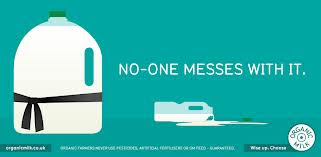 |
Tamiflu Side Effects
Graph from the Daily Mail, August 11, 2009 |
FDA Approves Neurotoxic Flu Drug For Infants Less Than One
by Sayer Ji
Green Med Information, 27 December 2012
Whereas the flu is self-limiting, the FDA's capacity for bad decisions is not...
The recent decision by the FDA to approve the use of the antiviral drug Tamiflu for treating influenza in infants as young as two weeks old, belies an underlying trajectory within our regulatory agencies towards sheer insanity.
Tamiflu, known generically as oseltamivir, has already drawn international concern over its link with suicide deaths in children given the drug after its approval in 1999. In fact, in 2004, the Japanese pharmaceutical company Chugai added "abnormal behavior" as a possible side effect inside Tamiflu's package. The FDA also acknowledged in its April, 2012 "Pediatric Postmarket Adverse Event Review" of Tamiflu that "abnormal behavior, delirium, including symptoms such as hallucinations, agitation, anxiety, altered level of consciousness, confusion, nightmares, delusions" are possible side effects.[i]
Recent animal research on Tamiflu has found that the infant brain absorbs the drug more readily than the adult brain,[ii] [iii]lending a possible explanation for why neuropsychiatric side effects have been observed disproportionately in younger patients.
The very mechanism of Tamiflu's anti-influenza action may hold the key to its well-known neurotoxicity. Known as a neuromindase inhibitor, the drug inhibits the key enzyme within the flu virus that enables it to enter through the membrane of the host cell. So fundamental is this enzyme that viruses are named after this antigenic characteristic. For instance, the "N" in H1N1 flu virus is named for type 1 viral neuromindase.
Mammals, however, also have neurimindase enzymes, known as 'sialidase homologs,' with four variations identified within the human genome so far; NEU1,NEU2,NEU3 and NUE4. These enzymes are important for neurological health. For example, the enzyme encoded by NEU3, is indispensable for the modulation of the ganglioside content of the lipid bilayer, which is found predominantly in the nervous system and constitutes 6% of all phospholipids in the brain.
It is therefore likely that neurimindase-targeted drugs like Tamiflu are simply not selective enough to inhibit only the enzymes associated with influenza viral infectivity. They likely also cross-react with those off-target neurimindase enzymes associated with proper neurological function within the host. This "cross reactivity" with self-structures may also explain why the offspring of pregnant women given Tamiflu have significantly elevated risk of birth defects (10.6%) relative to background rates (2-3%), according to a 2009 safety review by the European Medicines Agency.
Beyond the recognition of Tamiflu's intrinsic toxicity, there are two additional problems with the use Tamiflu in infants:
1. Infants do not yet have a sufficiently developed blood-brain barrier capable of keeping the chemical out of their rapidly developing brains
2. Their detoxification systems are not sufficiently developed to remove the chemical rapidly enough to prevent harm
The FDA's decision to include infants under one as treatable with Tamiflu is all the more disturbing when you consider that a 2010 study published in The Pediatric Infectious Disease Journal found that of 157 evaluable infants (mean age 6.3 months) treated for influenza with Tamiflu, complications due to the medication were found in the majority (54%) of the treated group.
According to the study
Complications were recorded in 84 patients (54%), the most serious of which were meningitis in 1 infant (1%), pneumonia in 9 (6%), and otitis media in 2 (1%).
Are meningitis, pneumonia and otitis media (ear infection) acceptable risks for treating influenza? Apparently for the FDA, it is.
How about death? Is that an acceptable risk of Tamiflu treatment for flu, a self-limiting disease?
The study concluded:
These data suggest Tamiflu use could induce sudden deterioration leading to death especially within 12 hours of prescription. These findings are consistent with sudden deaths observed in a series of animal toxicity studies, several reported case series and the results of prospective cohort studies. From "the precautionary principle" the potential harm of Tamiflu should be taken into account and further detailed studies should be conducted.
So, how did the FDA justify its decision to consider Tamiflu safe in infants under one year? Did it use controlled, randomized, placebo-controlled trials to ascertain safety? Of course not. Testing drugs on infants is unethical, and no parent in their right mind would enroll their newborn in such a trial. Lacking definitive evidence of safety, the FDA's expanded approval in children younger than one year was based on extrapolation of data from previous results in adults and older children.[iv] This, of course, is inappropriate as it denies the aforementioned differences in the susceptibility to drug toxicity and neurotoxicity between infants and older individuals. It also avoids proper consideration of the studies in the biomedical literature indicating its potential for severe, if not life-threatening toxicity to infants, children and adults alike.
Another concern, not addressed in the FDA announcement, is that as of Dec. 15th, 2010, the World Health Organization has acknowledged that, based on over 300 tested worldwide samples of the 2009 pandemic H1N1 flu, resistance to Tamiflu is growing.[v] Therefore, treating an infant with Tamiflu-resistant influenza would not only do nothing to combat the infection, but would poison that child and further disable their natural immune response.
The clear winner in the FDA's decision will be the bottom line of Roche, the manufacturer of this patented chemical. How much longer can the FDA continue to expect those subject to its regulatory decisions to maintain the illusion that it is interested in the public welfare?
We must remember that infants do not get sick from the flu as a result of Tamiflu deficiency, or flu vaccine deficiency for that matter. They do get sick from the immune-disrupting effects of synthetic chemicals completely foreign to human physiology (such as Tamiflu), and lack of vital hormone modulating compounds that result from adequate sunlight exposure (vitamin D3), and good nutrition.
Source:
Green Med Info.com












